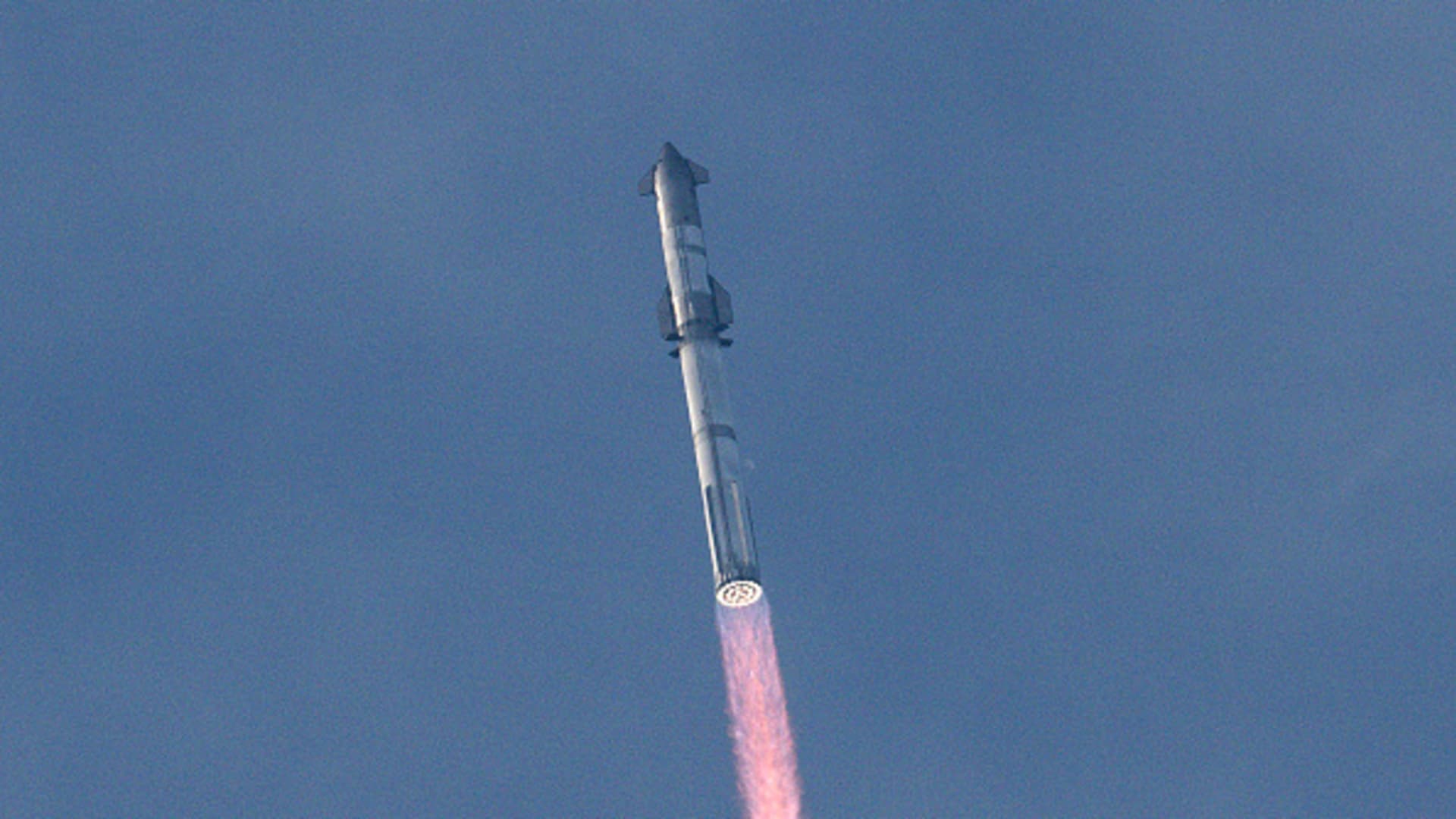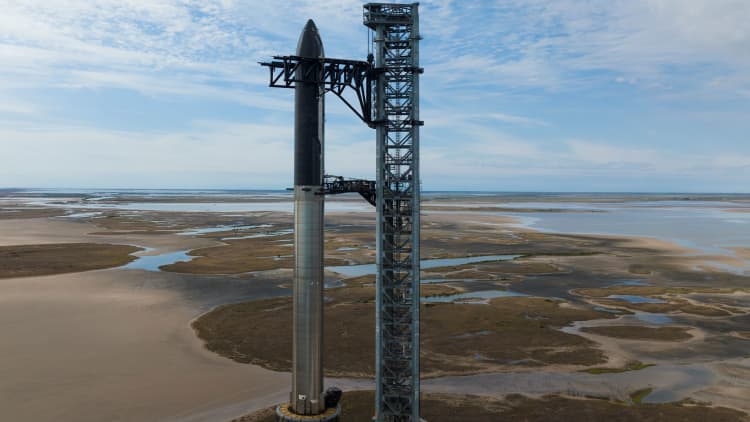
[A livestream from SpaceX of commentary and the launch is slated to start at 8:52 a.m. ET. Please refresh the page if you do not see the video player above.]
SpaceX launched the third test flight of its Starship rocket on Thursday and reached space, as the company pushed development of the mammoth vehicle past new milestones.
Elon Musk’s company launched Starship at about 9:25 a.m. ET from its Starbase facility near Boca Chica, Texas.
The rocket has now flown further than previous tests, with the flight expected to take an hour before it ends in an attempted splashdown in the Indian Ocean.
Musk congratulated his company in a post shortly after the launch, announcing that “Starship reached orbital velocity!”
The SpaceX Starship spacecraft lifts off from Starbase in Boca Chica, Texas, on March 14, 2024.
Chandan Khanna | AFP | Getty Images
SpaceX has flown the full Starship rocket system on two tests in the past year, with launches in April and November. Both previous launches had progressive but explosive results: While each of the rockets flew for a few minutes, with the most recent reaching space, both vehicles were ultimately destroyed due to problems.
The Federal Aviation Administration on Wednesday cleared SpaceX for a third launch attempt.
The Starship system is designed to be fully reusable and aims to become a new method of flying cargo and people beyond Earth. The rocket is also critical to NASA’s plan to return astronauts to the moon. SpaceX won a multibillion-dollar contract from the agency to use Starship as a crewed lunar lander as part of NASA’s Artemis moon program.
SpaceX heavily emphasizes an approach of building “on what we’ve learned from previous flights” in its approach to develop Starship. The company says its strategy focuses on “recursive improvement” to the rocket, where even test flights with fiery outcomes represent progress toward its goal of a fully reusable rocket that can deliver people to the moon and Mars.
Musk last year said he expected the company to spend about $2 billion on Starship development in 2023.
Starship’s staggering size
The SpaceX Starship spacecraft lifts off from Starbase in Boca Chica, Texas, on March 14, 2024.
Chandan Khanna | Afp | Getty Images
Starship is both the tallest and most powerful rocket ever launched. Fully stacked on the Super Heavy booster, Starship stands 397 feet tall and is about 30 feet in diameter.
The Super Heavy booster, which stands 232 feet tall, is what begins the rocket’s journey to space. At its base are 33 Raptor engines, which together produce 16.7 million pounds of thrust – about double the 8.8 million pounds of thrust of NASA’s Space Launch System rocket, which launched for the first time late last year.
Starship itself, at 165 feet tall, has six Raptor engines – three for use while in the Earth’s atmosphere and three for operating in the vacuum of space.

The rocket is powered by liquid oxygen and liquid methane. The full system requires more than 10 million pounds of propellant for launch.
Goals for third flight
There are no people on board this attempt to reach space with Starship. The company’s leadership has previously emphasized that SpaceX expects to fly hundreds of Starship missions before the rocket launches with any crew.
SpaceX aimed to surpass the nearly eight-minute flight of the second launch and complete further milestones. SpaceX and the FAA conducted an investigation into the November launch’s problems, and the company as a result made changes to the monster rocket before the third attempt.
The company outlined several new capabilities that it aims to demonstrate on this flight. Those include opening and closing the door of the spacecraft once in space – which would be how the rocket deploys payloads such as a satellites on future missions – and transferring fuel during the flight in a NASA demonstration, as well as relighting Starship’s engines while in space.

